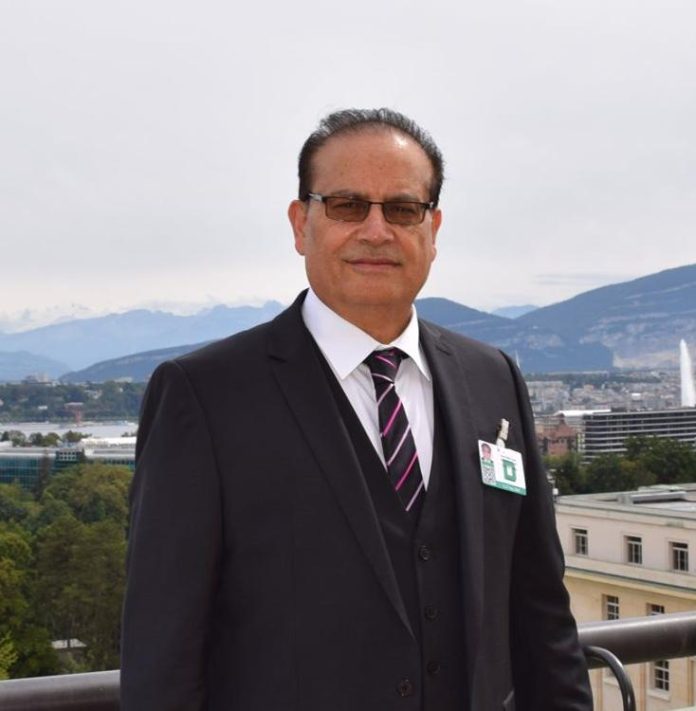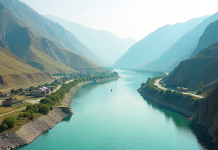By Qamar Bashir
Nawaz Sharif was an outcast in Pakistan—branded a convict, an absconder, and a proclaimed offender, marred by allegations of deep-seated corruption. He had been disqualified for life and ousted from the country. Sharif’s persistent defiance in challenging the establishment had resulted in multiple confrontations, leading to repeated punishments. The prevailing, widely accepted perception was that the establishment, through extensive efforts, state resources, and manipulation of the judicial, administrative, and civil systems, had imprisoned him and orchestrated his exile. It seemed inconceivable that they would, in their right mind, reinstate him to a position of power.
Contrary to all expectations, Nawaz Sharif returned in a blaze of glory, defying every perception, estimate, and logic. He, once a convicted figure whose mere mention in the media was deemed a grave offense, transformed overnight into the media’s darling—a remarkable shift akin to a magical transformation. Even the Interior Minister, who initially asserted Sharif’s imminent arrest upon his return due to his convict status, hastily retracted, showering him with praise, acknowledging his eminence, and granting him VVIP treatment upon arrival.
In an astonishing turn of events, the National Accountability Bureau (NAB) swiftly withdrew corruption charges against him, while the courts remarkably absolved him of allegations regarding ill-gotten wealth in London—all seemingly within the blink of an eye. The sudden about-face in treatment and legal proceedings surrounding Sharif’s return left an indelible impact, defying previous norms and expectations in a manner that resonated deeply.
However, a lingering unease persisted despite these developments. The intelligentsia, thinkers, analysts, and the general public found themselves deeply unsettled by the apparent manipulation of the country’s systems, initially against Nawaz Sharif and then abruptly in his favor. Individuals with analytical minds grappled with this abrupt turn of events, finding it deeply disquieting, illogical, and difficult to comprehend. As they pondered various scenarios, ironically, many did not envision Mr. Nawaz Sharif reclaiming the position of Prime Minister for the fourth time.
The political analysts were assuming that the army as an institution has deep memories. It follows a cyclical process to ensure that armed forces remain adaptable, well-prepared, and continuously evolved to meet the challenges of dynamic and diverse conflict scenarios. The process began with the clear definition of objectives and parameters. Develop scenarios by creating a realistic setting that encompassed geopolitical factors, terrain details, and enemy capabilities. The war game unfolded through real-time decision-making. Data is meticulously collected on decisions, outcomes, and resource utilization during the war game. Insights gleaned from the war game guided the refinement of strategies, tactics, and operational planning, feeding back into future simulations and real-world military operations.
As an analyst with past experiences closely working with both civil and military establishments, I have no doubt that before absolving Nawaz Sharif of all allegations and attempting to reinstate him as Prime Minister for the fourth time, the army would have followed specific procedures. They would have developed various scenarios focusing on questions like (a) What if Nawaz Sharif returns as Prime Minister for the fourth time? (b) Why should he not receive support for a comeback, and © what if an alternative nominee representing Nawaz Sharif is appointed as Prime Minister?
Scenario A: Given the PTI’s popularity, there’s a need for a prominent leader with public appeal and experience to counter Mr. Khan. Nawaz Sharif, with his extensive experience and stature, could emerge as a unifying figure across various political factions. His ability to initiate dialogue and focus on economic stability and governance reforms makes him a strong counterweight to Mr. Khan.
Mr. Sharif’s past accomplishments in economic development and public infrastructure can be highlighted through a strategic public relations campaign. He could reach out to disenchanted segments of society, pledging accountability and reforms to address previous concerns. Civil society, recognizing his experience and the call for stability, might lend support. The establishment could opt for a working relationship based on mutual respect and commitment to national interests, reinstalling him as Prime Minister for the fourth time.
To maintain control over his ambitions, ensuring he holds a slim majority or no majority in Parliament, he might need to form a coalition government with members favored by the establishment. This would keep his government reliant on their support, keeping his authority in check.
Scenario B: Opposition factions and certain elements within the military consistently highlight Nawaz Sharif’s past dismissals and allegations of corruption. They argue that his return to power could jeopardize national interests and financial integrity, reigniting past controversies and instability.
Nawaz Sharif, during his tenure as Prime Minister of Pakistan, had several notable confrontations with the military establishment. His political career was marked by moments of strained relations and power struggles with the military leadership. These confrontations often stemmed from differing approaches to governance, control over key policy decisions, and the exercise of authority. Sharif’s attempts to assert civilian supremacy and consolidate power occasionally clashed with the military’s influence and perceived interests, leading to tense standoffs and moments of significant political instability in Pakistan.
A substantial portion of the public remains skeptical of Sharif’s leadership due to lingering allegations and a perception of political opportunism. His reinstatement as Prime Minister might spark protests and deepen social divisions, leading to increased unrest.
Given Imran Khan’s popularity, the establishment might need to manipulate elections in favor of Nawaz Sharif, undermining the credibility of the electoral process. Such interference could lead to widespread rejection of the resulting government. If allegations of election rigging gain traction, international financial institutions like the IMF might withhold support, worsening the country’s already fragile economic condition. This could plunge the nation into further instability and turmoil. International partners are expected to express concerns about Sharif’s potential return, fearing its impact on diplomatic relations and regional stability. This skepticism complicates efforts to secure international support for his administration.
Scenario C: To navigate resistance and controversies surrounding Nawaz Sharif’s leadership, the Establishment might orchestrate conditions where Nawaz willingly presents his brother, Shahbaz Sharif, as a compromise candidate for the prime ministerial role. In this scenario, Nawaz Sharif could retain substantial influence behind the scenes, effectively guiding the party and Shahbaz in governance matters allowing him to maintain control while projecting a cooperative image to subdue opposition.
Unlike Nawaz, Shahbaz is perceived as less likely to challenge military authority. He has a history of cooperative dealings with the military, avoiding direct confrontations—something favored by the military in civilian leadership.
Shahbaz boasts a reputation as a competent administrator with a proven track record in delivering economic projects. He is expected to prioritize economic development, aligning with the military’s desire for a stable and prosperous Pakistan. Maintaining a favorable relationship with the military gives Shahbaz more flexibility, a crucial factor for the military to retain a semblance of civilian control. His appointment ensures continuity, minimizing disruptions and safeguarding the military’s interests.
Seen as a pragmatic politician willing to collaborate with different parties, Shahbaz’s approach is valued by the military. They prefer leaders capable of navigating Pakistan’s intricate political landscape without unnecessary conflicts.
Among the three scenarios, Scenario C emerges as the most promising compromise. By nominating Shahbaz Sharif as Prime Minister while retaining Nawaz Sharif’s influence behind the scenes, it offers stability, continuity, and a leader perceived as more cooperative towards the military. This compromise could address concerns raised in other scenarios, providing a pathway to navigate the controversies surrounding Nawaz Sharif’s leadership. It presents a strategic balance, potentially satisfying the military’s preferences for a less confrontational leader while maintaining a sense of stability within the government.
Reflecting on the abrupt ousting and subsequent return to power of both Benazir Bhutto Shaheed and Nawaz Sharif, orchestrated by the establishment, it becomes apparent that history might repeat itself. In a few years, we could find ourselves recalculating and envisioning various scenarios for Khan’s potential return to the power equation. The pattern of leaders being removed from office and later reinstated seems to be a recurring theme, hinting at a possible similar trajectory for Khan in the future.
By Qamar Bashir
Former Press Secretary to the President
Former Press Minister to the Embassy of Pakistan to France
Former MD, SRBC

















